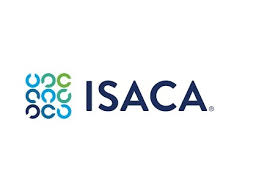Challenges and Limitations of ITIL

The IT Infrastructure Library (ITIL) is a widely used framework in the field of IT service management. It facilitates better service delivery by standardising procedures and increasing efficiency. You need to consider various ITIL Advantages and Disadvantages before incorporating them into your processes. Professionals can join the ITIL Certification Course and help for the success of your organisation.
Businesses must overcome ITIL’s limitations and obstacles like any other framework. In this blog, we will explore these factors to determine how to handle them well.
Table Of Contents
- Complexity of Implementation
- Cultural Resistance
- Resource Intensive
- Flexibility vs. Rigidity
- Integration with DevOps and Agile
- Continuous Improvement
- Overcoming Challenges
- Conclusion
Complexity of Implementation
Due to the numerous protocols, processes, and best practices defined in ITIL, new organisations may find it hard to implement. Teams must be well-prepared, have sufficient resources, and undergo thorough training to successfully migrate to ITIL-aligned practices and effective IT service management due to the extensive information contained in ITIL publications.
Cultural Resistance
One of the biggest obstacles to implementing ITIL is the cultural reluctance to change. Employees used to the status quo may resist changes in thinking, role definition, and process reform. Successfully implementing ITIL requires overcoming this reluctance, which in turn requires robust change management methods, clear communication, and the backing of stakeholders.
Resource Intensive
Implementing and maintaining ITIL requires time and money. In addition to expensive equipment and systems that enable ITIL processes, trained ITIL specialists are necessary. The fact that small organisations may need help dedicating sufficient resources to ITIL projects highlights the resource-intensive nature of ITIL adoption and the necessity for careful resource management in IT service management strategies.
Flexibility vs Rigidity
Some may find the ITIL framework’s methodical approach to managing IT services inflexible. The standard procedures may not always meet each organisation’s specific requirements. To provide the best possible IT service, it is important to balance rigidly adhering to ITIL rules and being flexible enough to react to individual situations.
Integration with DevOps and Agile
Integrating ITIL with Agile and DevOps is customary to improve service agility. However, combining these approaches smoothly can be challenging at times. Processes must be carefully coordinated to conform to ITIL’s structured approach rather than Agile’s iterative development.
Continuous Improvement
Iterative testing and improvement (ITIL) is based on feedback loops and service evaluations. Maintaining this strength also requires regular work. Reviewing and updating ITIL practices often is critical to ensure they remain relevant and efficient. In the long run, IT service management will be less successful if this is ignored, leading to antiquated procedures.
Overcoming Challenges
A well-planned strategy is necessary to overcome ITIL’s shortcomings and difficulties:
Adequate Training
Make sure that everyone involved gets some serious training on ITIL. This entails teaching ITIL experts the framework inside and out and showing non-ITIL employees how their jobs fit ITIL standards.
Effective Change Management
To effectively manage change, one must employ change management tactics to lessen opposition and increase adoption. Communicating, engaging stakeholders, and resolving concerns are essential to fostering a favourable attitude towards ITIL changes.
Resources Allocation
Ensure that ITIL initiatives have enough financial and human resources. This expenditure includes investment in IT Infrastructure Library (ITIL) training, tools, and staff.
Flexibility
Modify ITIL procedures according to the organisation’s requirements without compromising the fundamental principles. This necessitates a middle-ground strategy, wherein ITIL standards are adjusted to suit particular circumstances while preserving general efficacy and efficiency.
Integration
It is possible to combine ITIL with alternative frameworks for comprehensive IT service management, such as Agile and DevOps, without a hitch. Aligning processes, communication channels, and collaboration methods can achieve synergy between ITIL techniques and other methodologies.
Improvement Opportunities
Conducting regular reviews and updates is essential to ensuring that ITIL procedures remain relevant in rapidly changing IT environments. This involves performing audits regularly, talking to people who have a stake in the outcome, and making adjustments to meet the needs of evolving technology.
Clear Communication
Throughout the ITIL implementation process, ensure there are open and effective communication channels. Part of this is ensuring stakeholders know what they can expect from ITIL adoption, answering their questions, and keeping them updated on developments.
Leadership Support
Obtain upper management’s full backing and active participation in ITIL projects. Upper-level management’s support can benefit a company-wide commitment to ITIL best practices, a culture of constant improvement, and resource allocation.
By following these tactics, organisations can successfully implement ITIL and get its benefits for better IT service management.
Conclusion
ITIL approaches are effective and provide various advantages to organisations. They also pose challenges and limitations while implementing into the operations and processes.



